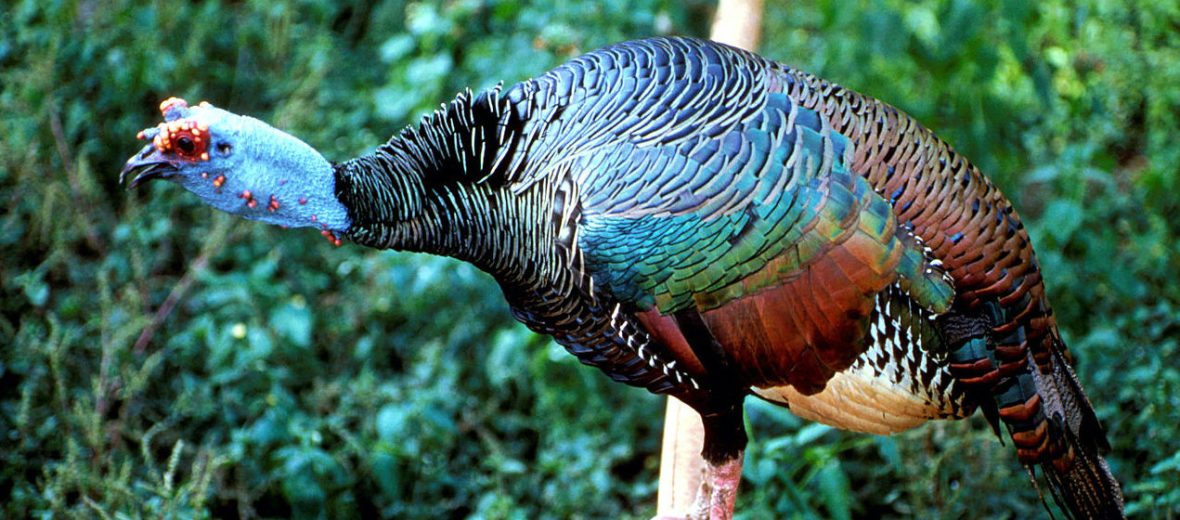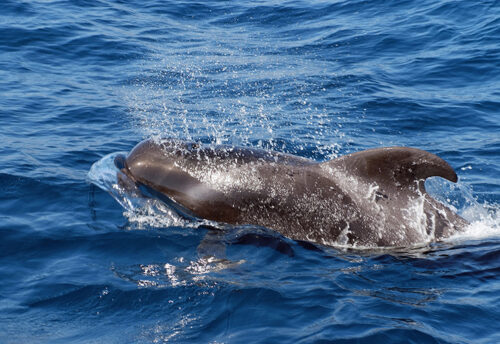
The ocellated turkey can be found in the Yucatán Peninsula, in Mexico; as well as in parts of Guatemala and Belize in just a 50,000 square mile range. They prefer tropical evergreen forests, open habitats like grasslands, savannahs, shrublands, and abandoned farmlands. Due to the threats of habitat loss at the hands of agriculture and the logging industry; extensive hunting; trapping; and invasive species (and with them disease and competition for food), these birds are listed as Near Threatened by the IUCN. Their populations are also decreasing.
First the Stats…
Scientific name: Meleagris ocellata
Weight: Up to 11 lbs.
Length: Up to 4 feet
Wingspan: Up to 67 inches
Lifespan: Up to 5 years
Now on to the Facts!
1.) There are only an estimated 49,999 wild individuals remaining, as of 2020.
2.) A group of turkeys is called a rafter or gang.
3.) Ocellated turkeys are diurnal (active during the day).
4.) Even though these birds are mostly terrestrial (spend most of their lives on the ground), at night, they roost high up in the trees to escape nocturnal (active at night) predators.
5.) These birds tend to run, rather than fly away from danger. But they are capable of strong, short-distance flight.
But wait, there’s more on the ocellated turkey!
6.) Jaguars and humans are their primary predators.
7.) They can be vocal and begin singing about 20+ minutes before sunrise.
Did you know…?
In 2011, a study found that the ocellated turkey made up a substantial amount of the diets of 4 prominent ethnic groups of the Yucatán Peninsula.
8.) The call of the females sounds like that of turkeys from North America. However, the male’s call sounds like an engine starting (sort of low frequency thumping sounds) and turns into the classic gobble sound.
9.) They feed on moths, beetles, leafcutter ants, nuts, grass seeds, and leaves.
10.) Ocellated turkeys are polygynous (1 male mates with multiple females).
But wait, there’s still more on the ocellated turkey!
11.) The mating dance begins by the male tapping his feet against the ground rapidly. He then moves his tail feathers from left to right while vibrating his wings quickly and dragging the tips of them against the ground. As the he performs this dance, he moves around the female making sure the dorsal surface of the tail feathers are in constant view of the female.
12.) Females lay up to 15 eggs that hatch in up to 28 days.
13.) Chicks fledge in up to 4+ months.
Now a Short Ocellated Turkey Video!
Be sure to share & comment below! Also, check out the Critter Science YouTube channel. Videos added regularly!
Want to suggest a critter for me to write about? Let me know here.
Photo credit: George Harrison



